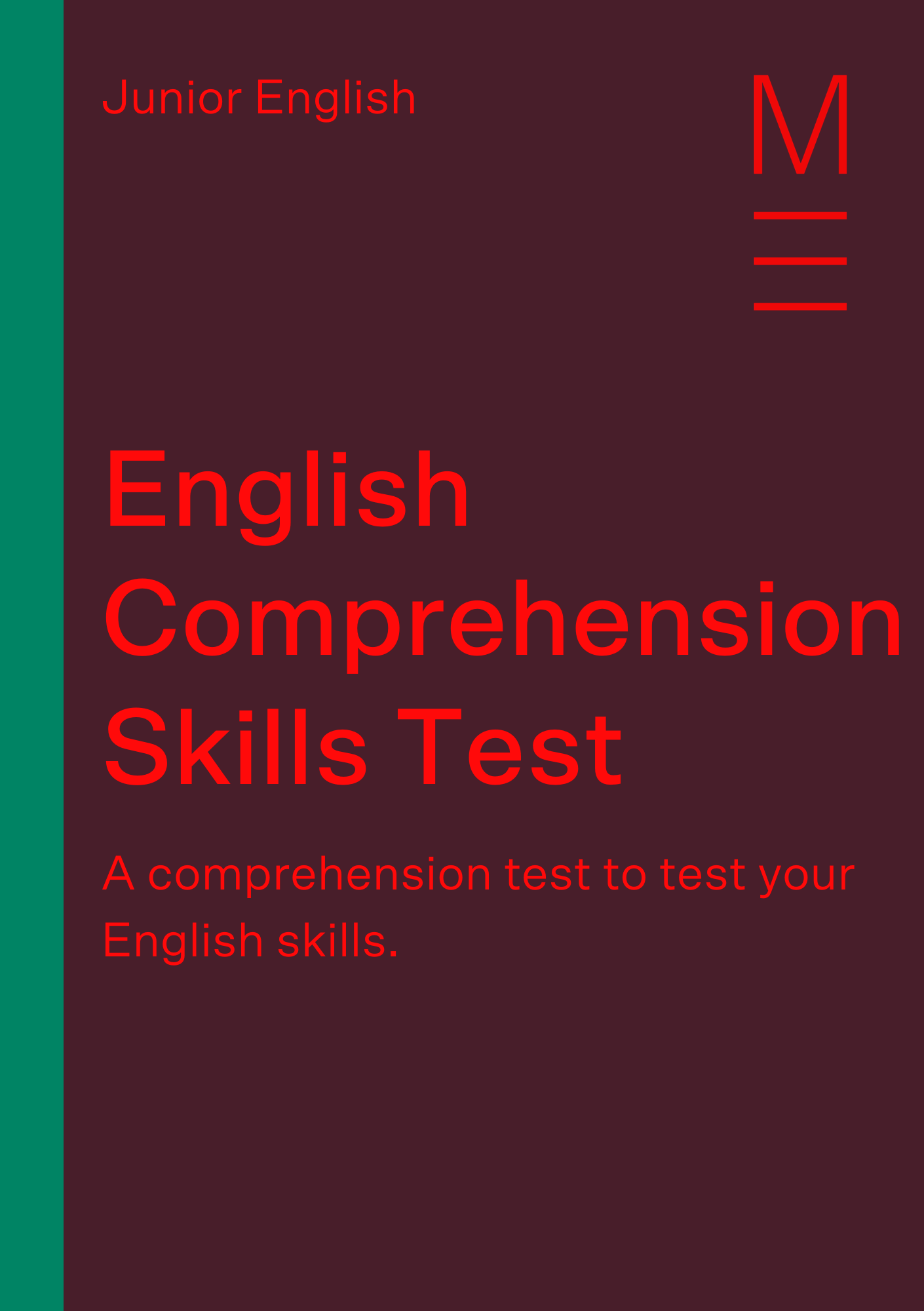Welcome to Matrix Education
To ensure we are showing you the most relevant content, please select your location below.
Select a year to see courses
Learn online or on-campus during the term or school holidays
Learn online or on-campus during the term or school holidays
Learn online or on-campus during the term or school holidays
Learn online or on-campus during the term or school holidays
Learn online or on-campus during the term or school holidays
Learn online or on-campus during the term or school holidays
Learn online or on-campus during the term or school holidays
Get HSC Trial exam ready in just a week
Get HSC exam ready in just a week
Select a year to see available courses
Science guides to help you get ahead
Science guides to help you get ahead

Common writing mistakes are the easiest and most unnecessary way to lose marks. Knowing what not to do will instantly boost your marks. Let’s look at the common writing mistakes Year 7&8 students make, so your child doesn’t make them.
Test and improve your reading and thinking skills with this practice test - answers included! Fill out your details below to get this resource emailed to you. "*" indicates required fields
Download your free English Comprehension Skills test

Download your free English Comprehension Skills test
At Matrix, we teach students that producing brilliant English responses comes with practice and following a process. But over the last 19 Years, we’ve also learned that students need to know what not to do. So in this article, we’re going to discuss the common writing mistakes Year 7 & 8 students make.
It’s not enough to know what to do, you need to know what not to do to really excel!
So, let’s take a look at the writing skills required by students in Years 7 & 8 for each of these text types.

In this article, we’ll discuss the common issues that students have when writing.
We’re going to look at:
When you help as many students as we have, you see the same mistakes a lot. A wide variety of students make the same mistakes again and again. This isn’t because they lack talent or aren’t smart, they just haven’t been shown how they should do things the correct way.
Once we show them the right way to go about writing, their marks improve quickly and significantly.
Let’s take a look at the common writing mistakes Year 7 & 8 students make.
Students often struggle with grammar. This is nothing to be ashamed of. But grammatical mistakes are the easiest way to throw away marks.
Many students haven’t been taught parts of speech or the difference between a correct or incorrect sentence.
There are many many rules of grammar for English. Knowing them all isn’t necessary. But there are some essential rules that you shouldn’t break if you want your readers to understand your ideas and arguments.
Here are some key rules that you should adhere to where possible:
Do you get frustrated when you’re told a sentence isn’t a sentence? Don’t worry you’re not alone. It’s pretty common. And most students don’t actually realise why they’re not grammatical sentences. The most common cause of a fragment is because the sentence is missing a subject or a verb.
Ungrammatical Example: Writing an essay for school.
Corrected example: I’m writing an essay for school.
The subject of a sentence has to agree with the verb in terms of number. Often, when students are rushing, they accidentally forget to ensure that the verb is plural if the noun is plural or the verb is singular if the noun is singular.
Ungrammatical example: The teacher mark the students’ essays.
Corrected example: The teacher marks the students’ essays.
or
Ungrammatical example: The teachers marks the students’ essays.
Corrected example: The teachers mark the students’ essays.
In sentences, it is important that you get the right pluralisation of the noun. Irregular nouns, those that don’t follow the common convention of adding -s or -es to a word, often trip students up. It’s important that you know when to use which ending.
Ungrammatical example: Mark felt the teachers had the knifes out for him.
Correct example: Mark felt that the teachers had the knives out for him.
Do you know when to use an apostrophe? Many aren’t entirely sure, or mix them up.
That’s okay.
Ungrammatical example: The students essay was sent off for marking.
Corrected example: The student’s essay was sent off for marking.
or
Ungrammatical example: The students essays were sent off for marking.
Corrected example: The students’ essays were sent off for marking.
There are many different rules governing commas. The most common error students have is using unnecessary commas . That is placing commas incorrectly in complex sentences.
Ungrammatical sentence: I enjoy writing essays, first I must plan them.
Corrected sentence: I enjoy writing essays, but first I must plan them.
Corrected sentence: I enjoy writing essays but first I must plan them.
Other comma related errors include:
Sometimes students oversimplify things and don’t make compound sentences when they need to connect to ideas into one sentence.
Example: I wrote an essay. The task required a short story.
Corrected example: I wrote an essay, but the task required a short story.
It’s important that students use the correct tense and perspective when writing.
Often students treat books or texts as if they exist in the past and not the present.
Incorrect example: In Herman Melville’s novel Moby Dick, he wrote about a man who chased a whale.
Correct example: In Herman Melville’s novel Moby Dick, he writes about a man who chases a whale.
Similarly, when students write they often take the wrong perspective.
For the most part, whenever you are writing a non-fiction piece in high school, you will need to write from a third person perspective. This is to place a degree of objectivity between you and the reader. An essay is already clearly your perspective, so using first-person pronouns like I, me, mine, we, us, and our is tautological – we’re saying the same thing twice.
Instead of using a pronoun, put the subject of the sentence first and speak more broadly of audience responses.
The exceptions to these rules occur when you are:
Students often don’t write directly. They talk around the subject that they are discussing and get to the point at the end of a paragraph, rather than starting with it.
Students mean well when they do this, they want to develop tension and reveal their genius to the marker in the final sentences. Unfortunately, essays and other non-fiction forms aren’t mystery novels.
Readers need to know what they are talking about straight away.
You must make sure that you are clearly leading with what your subject or ideas are in each sentence and paragraph.
If you want to persuade a reader, it is important that they know what they are being persuaded about so they can weigh up the argument.
If you make your argument without clarifying what it is actually about, you will just confuse your reader.
In addition, students often overuse the passive form. What is the passive form? The passive form is when we put the object of the sentence first instead of the subject. What does this mean? Let’s have a look.
We normally write in active sentences where we use the following order:
Subject –> Verb –> Object
To understand, let’s look at an active sentence:
The girl wrote the novel.
In this sentence, “The girl” – the subject – “wrote” – the verb – “the novel” – the subject. When we read this, it is very clear who is is doing what.
The passive version of the sentence is:
The novel was written by the girl.
In this sentence, “The novel” is the subject. Rather than a simple verb, we have an auxiliary verb and the past participle of the verb wrote “was written”. Then, rather than just the object, we have a preposition “by” preceding the object “the girl.”
But this is confusing as the girl is really the subject of the sentence as she wrote the novel.
You need to be active and direct when writing for an audience. You should do the hard work for them.
We discuss this in greater detail in our section on grammar.
Overwriting is a common problem that makes students’ writing unnecessarily convoluted.
This happens because students often get carried away when they learn new words.
It’s always exciting when you learn a new and complex word. We want to show off our new found knowledge. But that’s not always going to help an essay hit the spot.
It’s easy to forget that its writing clearly – with the right words – and not writing with the most complex words that gets the marks.
You should always put readability first, not your knowledge of obscure words and jargon.
Let’s look at an example:
This sounds intellectual and academic, but it isn’t really. Instead, it over-complicates something that should be simple. The reader has to do too much work to understand this.
Let’s look at a better sentence saying the same thing.
You’ll see that this last example is clear and accessible. It is readily apparent what is being discussed. There is no unnecessarily complex jargon or flowery language.
An important part of writing effectively is having a comprehensive vocabulary.
The same word can have different connotations, senses, and meanings. This means that knowing the exact definitions of words is as important, if not more so, than having an extensive vocabulary. Really, you want both!
Using a word out of context or in the wrong sense can make things very difficult to understand.
When students are transitioning to the first years of high school, their vocabulary grows but their knowledge of definitions sometimes takes a while to catch up.
For example:
In this example, the verb “infer” has been confused with “imply.” The correct sentence should read:
Commonly confused words include:
There are many many more. If you want to make sure that you’re using the correct word for the correct situation, look it up.
Don’t be afraid to check what you think a word means against what it does mean.
Students often don’t develop their ideas. A paragraph must be more than a couple of sentences that introduce an idea, an example, and an explanation. You need to develop and explore these ideas in more detail.
It is important to remember that T.E.E. is scaffold for producing paragraphs and not the bare minimum for a response.
Rather than cramming these things into one or two sentences, you should really be developing them further by asking yourself some critical thinking questions as you go:
Asking yourself these questions will increase your insights into the text and how you have come to the conclusions that you have.
This information is actually quite important for your argument. When you are constructing an argument to persuade people of something or to show your steps of logic.
It is always more persuasive if you explain succinctly how you arrived at your understanding so others can follow in your footsteps.
For each of the questions above, you need to add more information to your response so your readers can follow your argument in detail!
Transitions connect your ideas together.
Students in Years 7 and 8 have great ideas and arguments about a specific idea or thing, but they often struggle to connect them to other parts of a response to develop a sustained response.
A sustained response where is a central argument (thesis) is made consistently through a response and every idea, statement, and piece of evidence that is introduced is connected back to this central argument.
When you write a response, you should make sure that every piece of evidence that you present and the explanations that go with them.
You need to ensure that you consistently transition to the central idea. You should use transition words and phrases to create these links.
Transition words and phrases connect different sentences together by signalling that they share a central idea or that the writer is moving from one idea to another.
When you use a transition word or phrase, you are trying to signal a relationship between different ideas.
Transition words and phrases come in four different categories depending on what they are doing:
There are many many transition words and phrases. Below is a table of the most common divided by purpose derived from Professor Gregory Campbell and Prof. Michael Buckoff’s extensive list at MSU .
| Category | Purpose | Word |
| Additive | Addition |
|
| Introduction |
| |
| Reference |
| |
| Similarity |
| |
| Identification |
| |
| Adversative | Replacement |
|
| Conflict |
| |
| Emphasis |
| |
| Concession |
| |
| Causal | Consequence |
|
| Effect or result |
| |
| Sequential | Summary |
|
| Conclusion |
| |
| Numerical |
| |
| Table: List of transition words and phrases derived from this page from MSU. Used under Creative Commons 3.0 | ||
Now we’ve looked at the mistakes students make, you need to practice not making them! It is important that you take the time to reread your work and look out for these common mistakes. The more you start picking them up after you’ve written, the less you will make them as you write!
Creative writing is a craft that’s learned. You’re not born with it.
In our next article, we’re going to share with you the secrets of writing an amazing creative!
© Matrix Education and www.matrix.edu.au, 2025. Unauthorised use and/or duplication of this material without express and written permission from this site’s author and/or owner is strictly prohibited. Excerpts and links may be used, provided that full and clear credit is given to Matrix Education and www.matrix.edu.au with appropriate and specific direction to the original content.